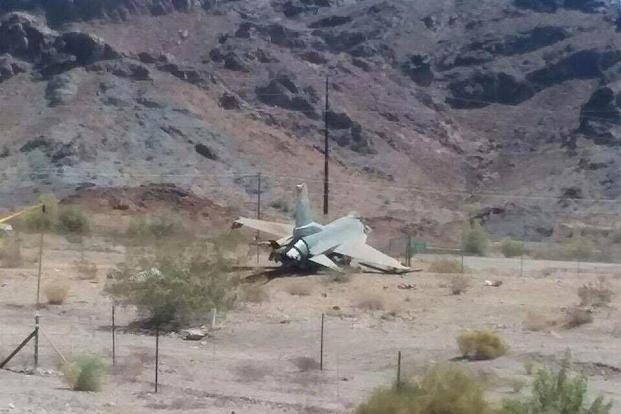This year's rash of aviation accidents likely has root causes dating back years, and the best way to solve them is for units to be transparent about problems, a retired Air Force four-star general told Military.com.
"I think every aviation accident is independent and has to be looked upon [at] face value," said retired Gen. Herbert "Hawk" Carlisle, an F-15 Eagle pilot who led Air Combat Command between 2014 and 2017.
Carlisle, now president and chief executive officer of the National Defense Industrial Association, recently sat down with Military.com to talk about his perspective on the Air Force's challenges, including aviation accidents, since he retired from the service last year.
There's not a single root cause for the issues, he said, adding it's most likely a mix of past and present inconsistencies within the force.
"Manpower was a big driver … the resource challenges combined with the pace of which we're using our airplanes, and the demand signal from the combatant commanders … and how it has manifested itself" are all likely factors, Carlisle said, referring to a spike in accidents this year.
Related content:
- Air Force Wants to Predict Aviation Accidents Before They Happen
- Total Hydraulic Failure Caused Deadly T-38 Crash in November, Air Force Says
- Amid Pilot Shortage, Air Force Tests Out Fly-Only Career Track
Carlisle said the main problem is not a lack of oversight, though the service may want to revisit that issue.
In recent months, the Air Force has pushed more authority down to the wing or squadron level in an effort to simplify the decision-making process. That initiative, led by Chief of Staff Gen. David Goldfein and Air Force Secretary Heather Wilson, is "spot on," Carlisle said.
The Air Force also conducts staff-assisted or Inspector General visits that act as a check-up on a specific base or unit. But those visits may not be as frequent as they were in the past due to sequestration and the drawdown.
Because of budget cuts, "we cut staffs drastically," Carlisle said. "We're cutting staffs today to fill cockpits" instead. "We're leaving empty billets, so that's a manifestation of this lack of resources."
He continued, "We also cut maintenance manpower. We all had great intentions but, ultimately, it was a bad decision and a wrong thing to do. And now we're trying to grow that maintenance manpower back. But we lost a lot of great experience.
"And we haven't recapitalized our airplanes. We were supposed to, years ago, buying 80 F-35s a year. And we're not even [there] yet,” Carlisle said.
The lack of recapitalization is a recipe for resource constraints, and the rapid pace of operations further intensifies the squeeze, he said.
Carlisle said consecutive years of continuing resolutions also affect readiness. "When you try to manage maintenance and depot inputs and all those things, not knowing what the budget is going to look like because of a CR … that has impact."
The Air Force last month conducted a one-day safety review for active-duty, Guard and Reserve units for airmen to disclose any issues in aircraft or procedures that may have led to crashes in recent months. Findings will be compiled for an internal report to senior leaders and members of Congress, officials told Military.com.
So far this year, the Air Force has lost seven aircraft in non-combat training accidents, including an HH-60 Pave Hawk helicopter, two T-38 Talon trainers, a WC-130 Hurricane Hunter, two F-16 Fighting Falcons -- one from the Thunderbirds demonstration team -- and a Kadena-based F-15 Eagle. Additionally, an A-29 Super Tucano crashed at Holloman Air Force Base, New Mexico, in June as part of the Air Force's Light Attack Experiment.
Several of the accidents involved fatalities.
Others incidents include flightline mishaps, paused operations at bases, emergency landings and even stand-downs of entire fleets. For example, Air Force Global Strike Command grounded the entire B-1B Lancer fleet for nearly two weeks in June over safety concerns related to the aircraft's ejection seats. More recently, an F-35A Joint Strike Fighter at Eglin Air Force Base, Florida, suffered a ground mishap that caused its nose gear to collapse following an in-flight emergency.
The Government Accountability Office this month criticized the Defense Department for improperly tracking aviation accident data, taking the individual services to task for not collecting data the same way.
Carlisle believes the best solution is for senior officials to keep the door open and have ongoing conversations on potential problems. "It's not as much oversight as much as it is … going out and talking with [individuals] … just seeing what's going on," he said.
-- Oriana Pawlyk can be reached at oriana.pawlyk@military.com. Follow her on Twitter at @Oriana0214.













